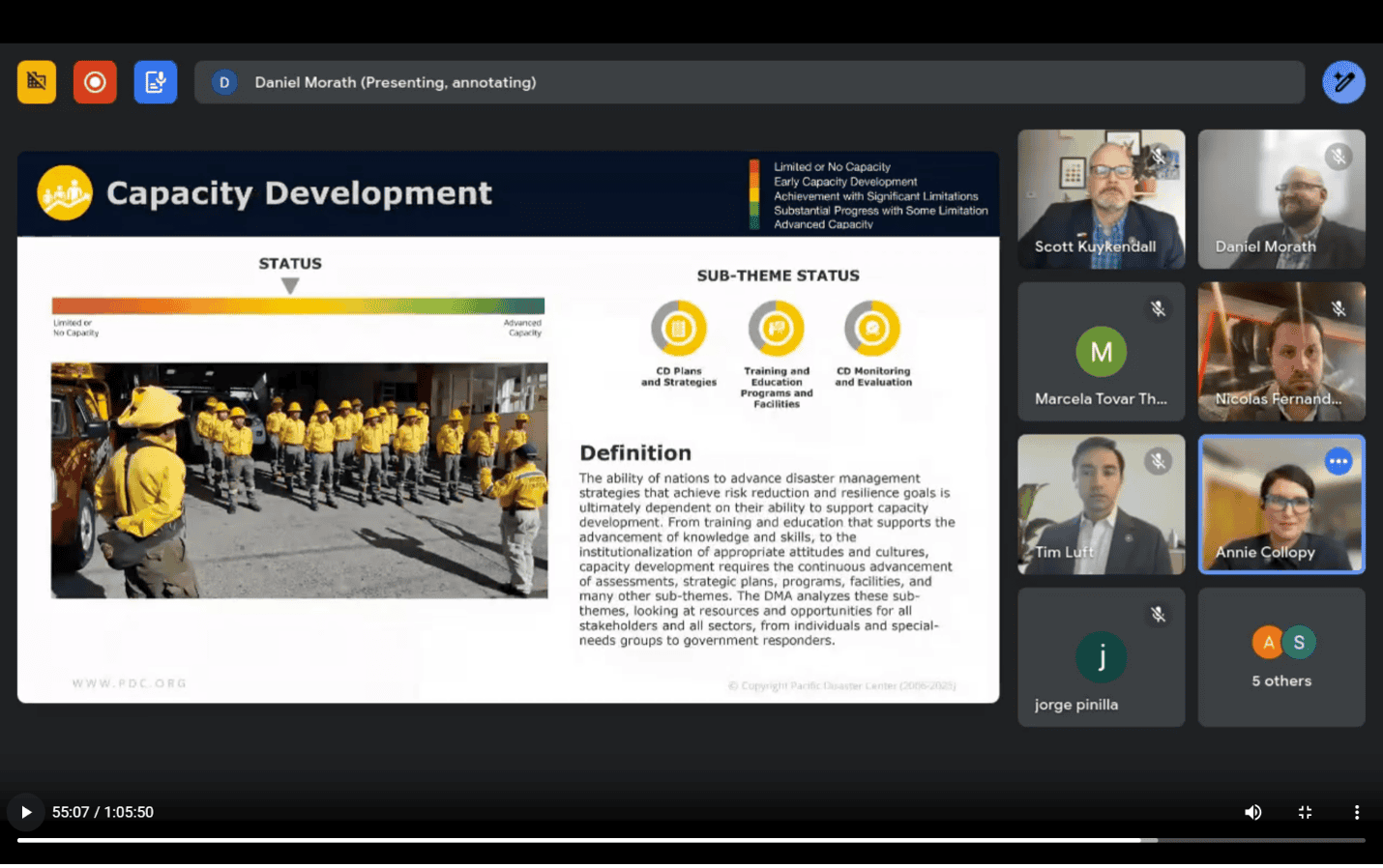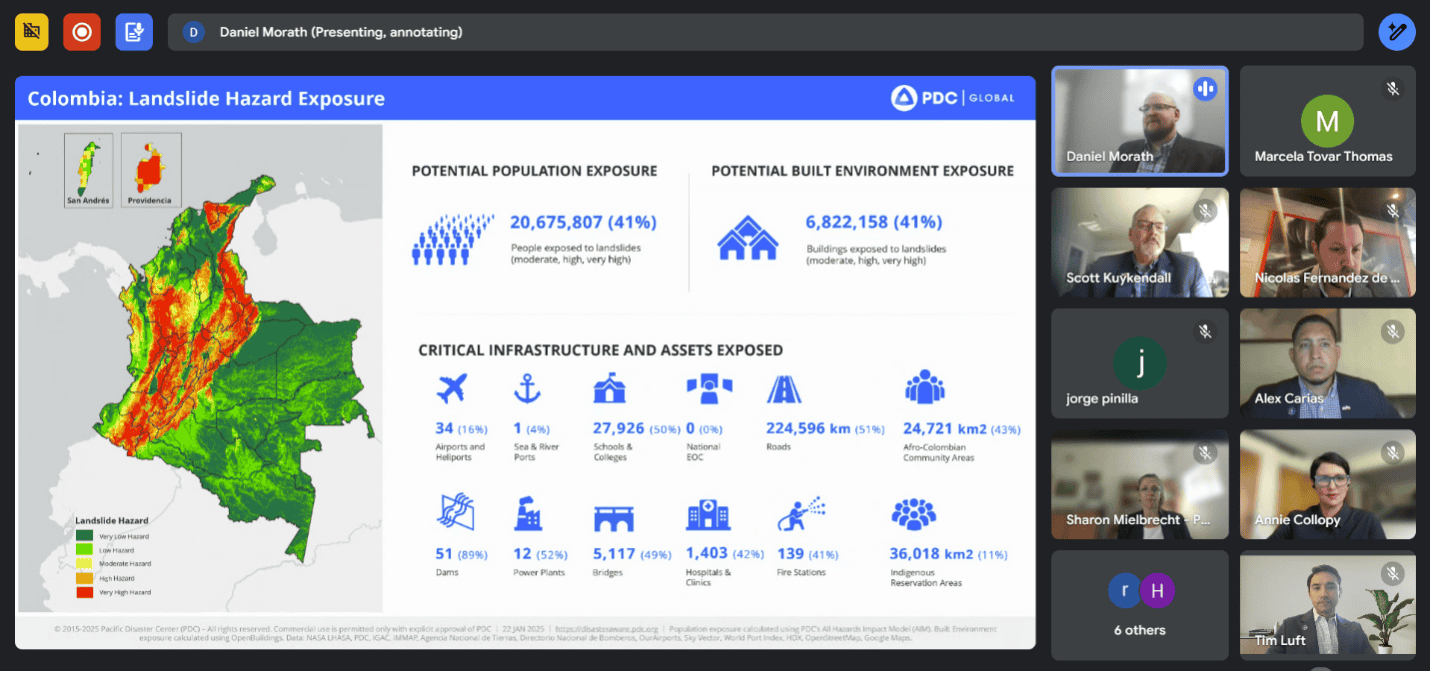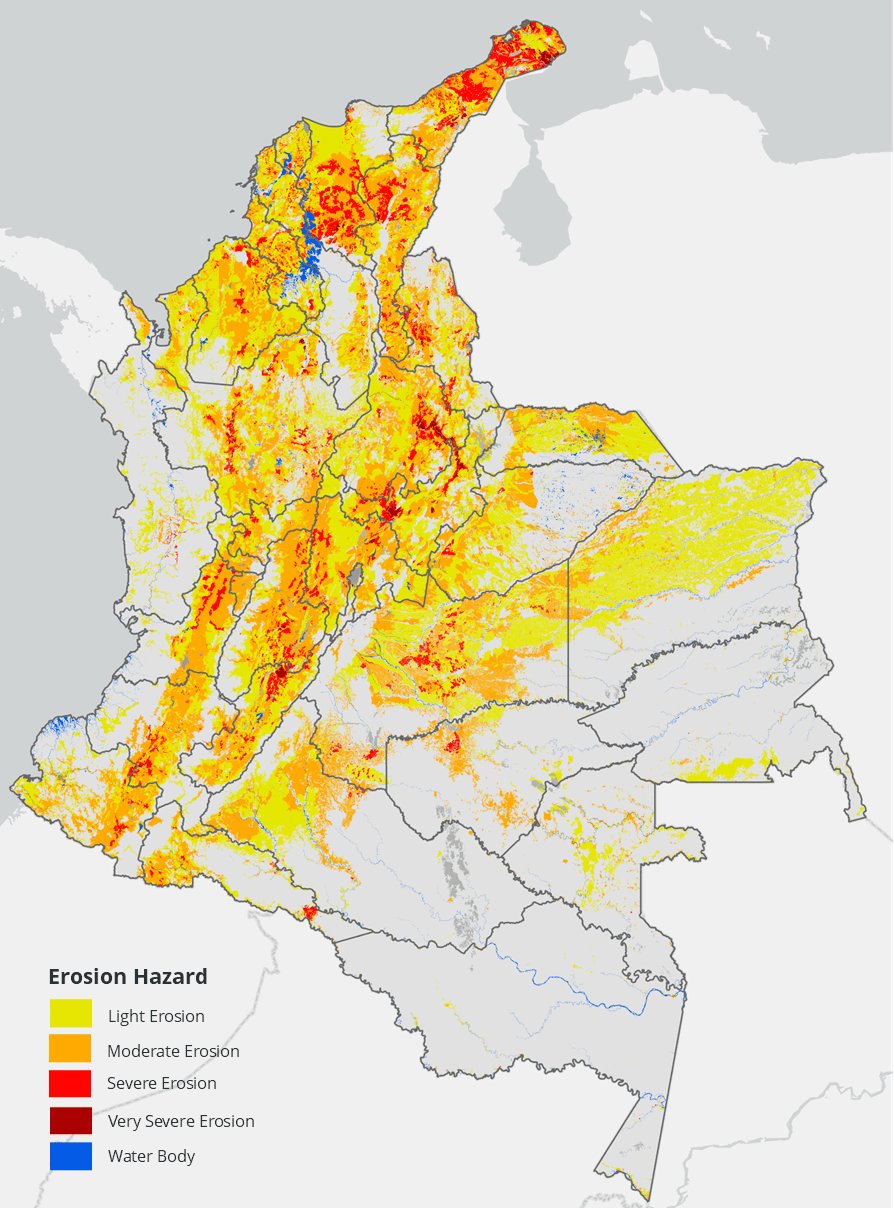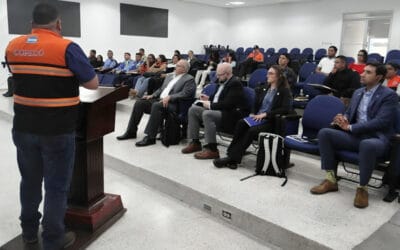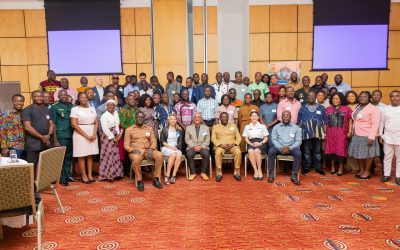In November 2024, Colombia experienced unprecedented rainfall and flooding which affected thousands of vulnerable families, particularly in the Choco department. The incidence of flooding is just one of eleven major hazards that make up the nation’s hazard risk profile.
Photo credit: Nercy Cordoba Martinez
Colombia is making significant strides to enhance national safety and security through a series of disaster resilience and risk reduction initiatives.
As one of the most disaster-affected countries in Latin America and the Caribbean, Colombia has recently launched a landslide early warning system in Medellín, as well as major upgrades to transportation infrastructure connecting the country, improvements in water resource management, and the introduction of urban nature-based greenways to mitigate extreme heat and air pollution.
More recently, Colombia’s National Unit for Disaster Risk Management (Unidad Nacional para la Gestión del Riesgo de Desastres, UNGRD) has completed an innovative project to scientifically assess risks and vulnerabilities for all of Colombia’s 1,122 municipalities as well as its national disaster management capacity. This ambitious initiative, carried out in collaboration with the Pacific Disaster Center (PDC)—a University of Hawai’i applied science and research center—was completed over a two-year period with support from U.S. Southern Command and the U.S. Embassy in Bogotá.
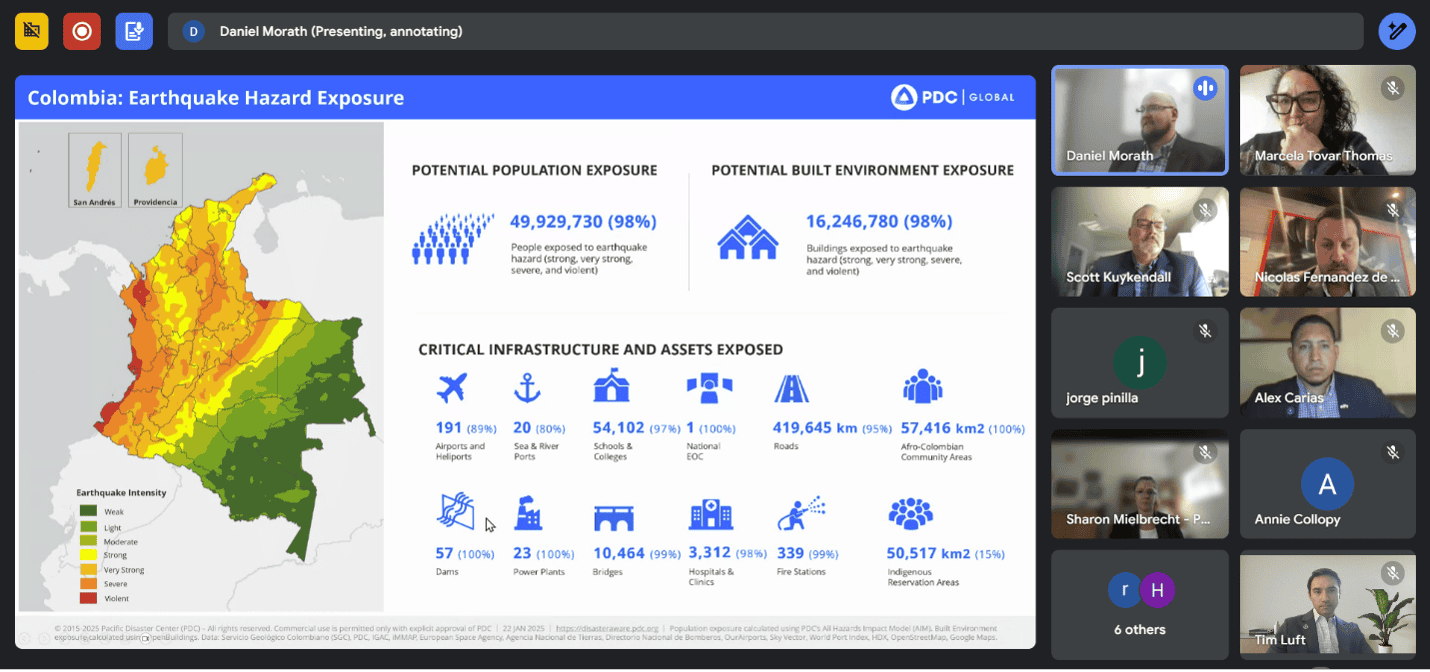
Colombia’s stakeholders, including representatives with UNGRD, gathered for a virtual presentation of the national and municipal results of the National Disaster Preparedness Baseline Assessment delivered by PDC on February 19, 2025.
Photo credit: Pacific Disaster Center
“PDC’s data processing and advanced analytics capabilities were put to the test during this groundbreaking collaboration with Colombia’s UNGRD. This is the first time we’ve scaled our results to a hyper-local, municipal level. Municipality-level data will enable UNGRD to focus programs within smaller communities more effectively to achieve the desired outcomes,” said PDC’s Disaster Management Specialist and Exercise Lead Scott Kuykendall.
“Municipality-level data will enable UNGRD to focus programs within smaller communities more effectively to achieve the desired outcomes.”
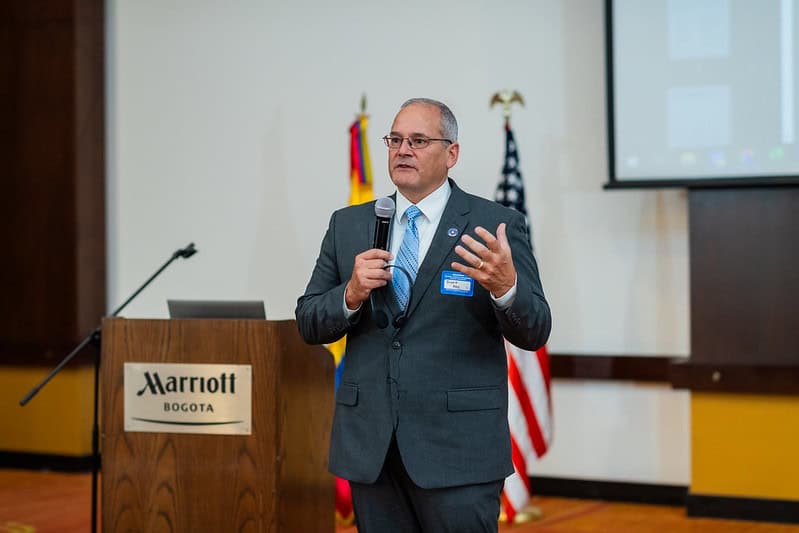
PDC’s Scott Kuykendall kicks off Colombia’s NDPBA in parntership with UNGRD in 2023.
Photo credit: PDC
“We are honored to have been invited to work with the team of experts at UNGRD, as well as several other remarkable agencies to gain a better understanding of risks across the country in support of Colombia’s risk reduction and resilience goals.”
Multi-Hazard Risk
Resilience
Erosion Hazard Exposure
PDC helped assess risks for 11 types of hazards in Colombia at a departmental and municipal level. Results of the national assessment will be published and available for download at www.pdc.org/ndpba. Municipal results will be available to disaster management stakeholders through PDC’s DisasterAWARE platform at https://disasteraware.pdc.org.
PDC conducted a virtual presentation of the National Disaster Preparedness Baseline Assessment (NDPBA) results on February 19, 2025, with multiple Colombia stakeholders in attendance. The results were showcased in DisasterAWARE Pro, PDC’s early warning and disaster risk intelligence platform which is a web-based application that is provided to all stakeholders as part of the program. DisasterAWARE is a unique component of PDC’s assessment that allows decision-makers to actively leverage verified scientific data and risk information from the assessment for operations that support disaster planning, response, and mitigation.
“The NDPBA is going to be a great asset for us. It’s not only useful for Colombia’s National Disaster Response Unit, but for other entities of the national government. “
“The NDPBA is going to be a great asset for us. It’s not only useful for Colombia’s National Disaster Response Unit, but for other entities of the national government. We plan to meet with other ministries to share this information because I think it is going to be very useful for other government offices. I think they should be aware of the eleven hazard categories presented to us, as it could be useful in other territories of the country,” said Marcela Tovar, Head of International Cooperation.
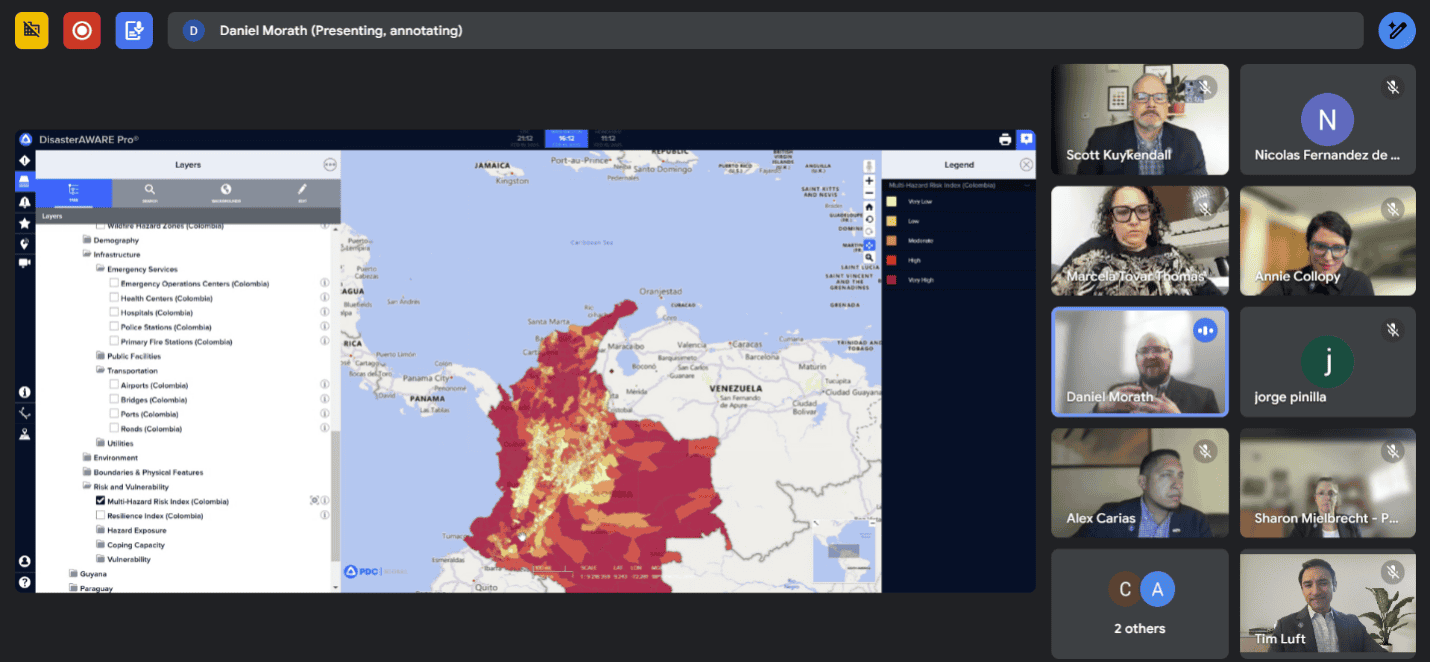
PDC showcases assessment results inside of its disaster early warning and risk intelligence platform, DisasterAWARE, which supports operational use of the assessment in disaster planning, response, and mitigation.
PDC’s disaster management analysis findings—a very important component of the national baseline assessment—were also shared during the presentation. This included recommendations and a suggested five-year plan to help decision makers put risk and vulnerability assessment results into action and support more effective planning and future investments.
PDC and UNGRD plan to continue their partnership beyond the project to socialize results of the national baseline assessment with other Colombian governmental organizations as well as engage in future DisasterAWARE trainings.
